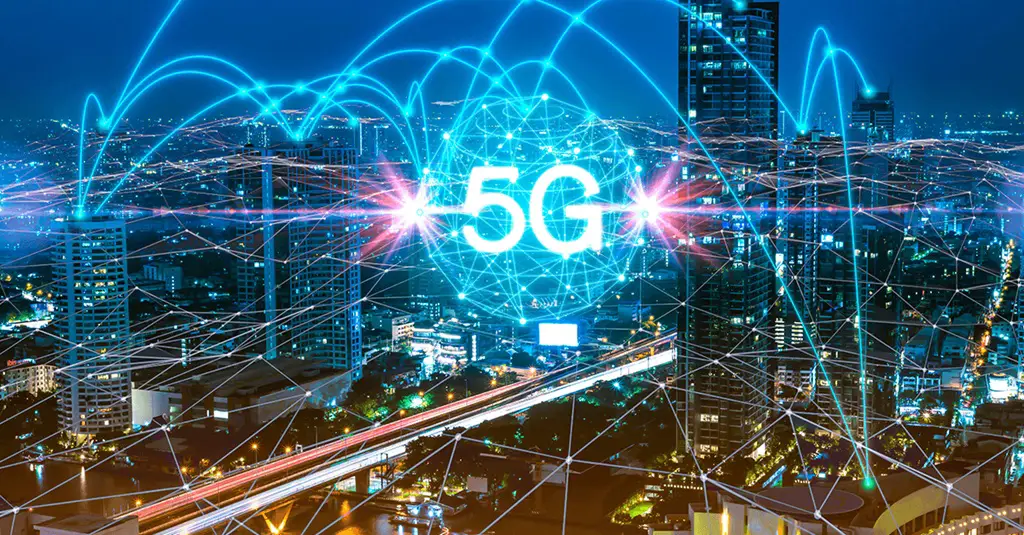How 5G Is Changing the Tech Industry in 2025

The rollout of 5G technology has been one of the most anticipated shifts in the telecommunications and technology industry. As we step deeper into 2025, the real-world impact of 5G is more visible than ever. This next generation of wireless technology is not just about faster internet for smartphones—it’s fundamentally transforming industries, enabling innovation, and reshaping the way we live, work, and connect.
What Makes 5G Different from 4G
5G stands out from previous wireless generations due to its speed, low latency, and capacity. While 4G networks typically offer speeds of around 100 Mbps, 5G can deliver speeds up to 10 Gbps. This isn’t just a minor upgrade—it’s a dramatic leap forward. In addition to speed, 5G offers ultra-low latency, which means the delay between sending and receiving information is reduced to just a few milliseconds. This is crucial for applications that require real-time feedback, like autonomous vehicles, remote surgeries, and live-streaming AR/VR experiences.
Another advantage of 5G is its ability to connect a massive number of devices simultaneously. This makes it ideal for the growing Internet of Things (IoT) ecosystem, where everything from refrigerators to factory machines is connected and exchanging data in real time.
Revolutionizing Industries Through 5G
The impact of 5G extends far beyond consumer mobile experiences. Several key industries are already seeing major transformations:
-
Healthcare: With 5G, remote diagnostics, robotic surgeries, and real-time monitoring have become more accurate and dependable. Doctors can now perform certain procedures remotely with zero delay, which was not possible with previous networks.
-
Automotive: 5G is a backbone technology for connected and autonomous vehicles. Cars can communicate with each other and traffic systems in real time, significantly improving safety and reducing traffic congestion.
-
Manufacturing: Smart factories powered by 5G networks can run more efficiently. Machines equipped with sensors can communicate in real time, reducing downtime and optimizing production. Predictive maintenance and automation have become more feasible with high-speed, low-latency networks.
-
Entertainment and Gaming: Cloud gaming, 8K video streaming, and AR/VR experiences have become smoother and more immersive. Gamers no longer need expensive hardware, as cloud computing handles the processing power, made possible by 5G’s speed and reliability.
-
Agriculture: Smart farming tools use sensors and drones to monitor crop health, soil conditions, and livestock. With 5G, farmers receive real-time data and can make informed decisions more quickly, leading to increased productivity and reduced waste.
How Businesses Are Adapting to 5G
Businesses across all sectors are racing to adapt to 5G capabilities. Telecom providers are expanding infrastructure rapidly to meet the demand, and many enterprises are redesigning their digital strategies to include 5G-powered services.
Cloud service providers are optimizing data centers and applications for 5G traffic, ensuring users have smoother and faster experiences. Software developers are designing apps that leverage 5G’s capabilities, such as AR-based retail shopping, real-time translation, and mobile broadcasting.
In the enterprise space, video conferencing, remote collaboration tools, and edge computing are becoming faster and more reliable, reducing downtime and boosting productivity. Remote work is now more efficient, with minimal lags and improved data access across devices.
Challenges Facing 5G Implementation
Despite the promise, there are still challenges to overcome. Building the infrastructure needed for 5G is expensive and time-consuming. It requires new base stations and hardware, especially in rural and less-developed areas where coverage is still limited.
Security is another concern. With more devices connected to the internet, the attack surface for cybercriminals increases. Ensuring the security of 5G networks and connected devices is a top priority for both governments and private sectors.
There’s also the issue of spectrum availability. Different regions allocate radio frequencies differently, and harmonizing these standards globally is still a work in progress. Interference between networks and devices can also affect performance if not managed properly.
What the Future Looks Like
Looking ahead, 5G is expected to serve as the foundation for even more advanced technologies. It will play a crucial role in the development of smart cities, where traffic lights, utilities, public safety systems, and buildings are interconnected for efficiency and sustainability.
Augmented reality and virtual reality will evolve rapidly as latency and bandwidth constraints are eliminated. Education, retail, real estate, and travel will all benefit from more immersive and responsive digital experiences.
6G is already being explored in labs, but 5G’s full potential is far from exhausted. In the coming years, as coverage expands and costs come down, 5G will become the standard for communication, not just in developed countries but globally.
Conclusion
The influence of 5G on the tech industry in 2025 is undeniable. It has moved beyond being a buzzword to become a powerful enabler of innovation and efficiency across multiple sectors. From healthcare to entertainment, 5G is unlocking new possibilities and redefining how technology serves society. As adoption grows and infrastructure matures, we can expect even greater transformations ahead—marking a new era in digital connectivity.
















